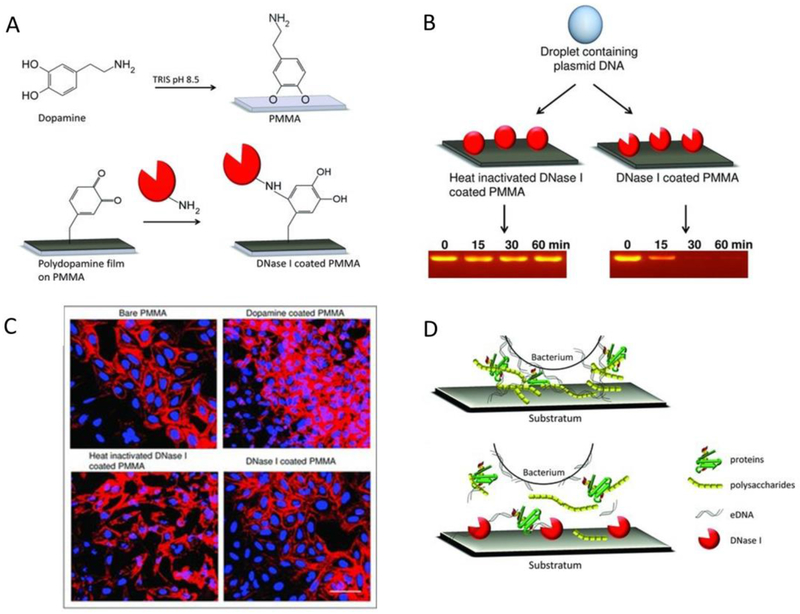Figure 7.
(A) Adhesion of dopamine to PMMA by dip coating and subsequent DNase I coupling to a polydopamine film. (B) Agarose gel showing the degradation of plasmid DNA in a droplet on PMMA coated with DNase I with and without heat inactivation. Plasmid DNA is hydrolyzed within 30 min when placed on PMMA coated with active DNAse I. (C) CLSM images of U2OS cell adhesion and proliferation on different substrata. The scale bar represents 100 μm. (D) eDNA acting as a bridge between a bacterial cell surface and various biopolymers in EPS, such as proteins and polysaccharides, play an important role in bacterial adhesion (upper). The disruption of the EPS by DNase I prevents bacterial adhesion to the substratum surface (below). Copyright 2013 Wiley.

